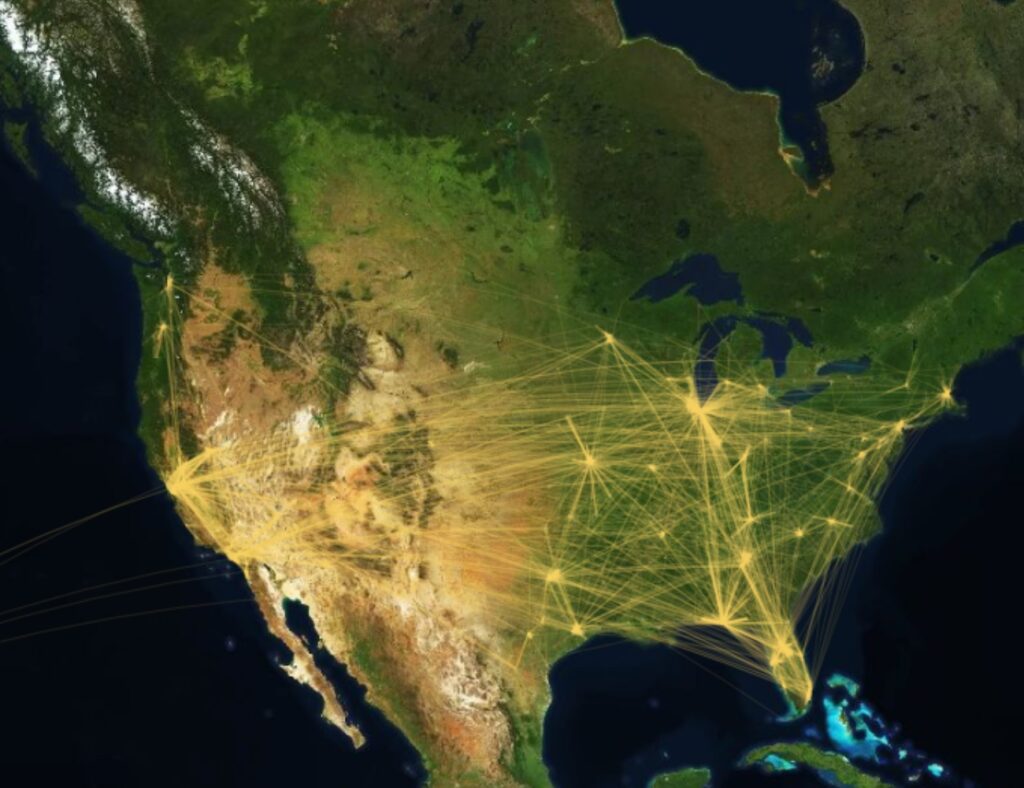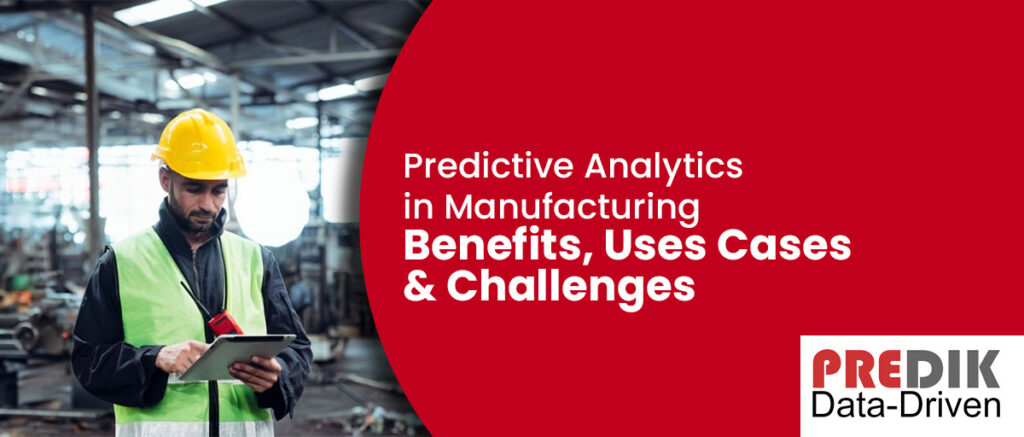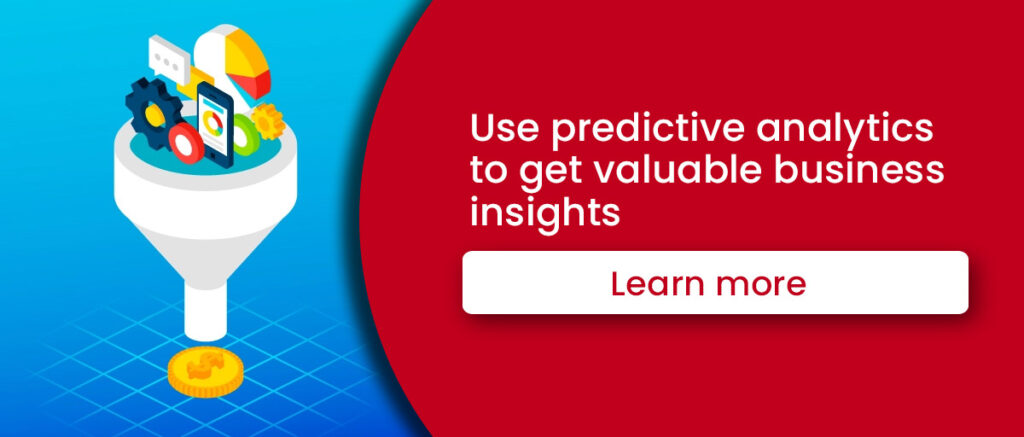Combining the immense potential of Big Data with Artificial Intelligence and Machine Learning, Predictive Models offer unparalleled insights into the mechanics of various processes involving a manufacturing company.
Manufacturing companies face a range of complex challenges in today’s business environment. These include disruptions like geopolitical crises and raw material shortages, which can impact global supply chains and hinder access to essential markets. On top of this, businesses must meet increasingly strict sustainability regulations, in need of a complete overhaul of traditional models that rely on non-renewable energy sources.
To face these challenges, manufacturing companies must become data-driven organizations to develop better, more transparent, and sustainable processes. An integrated and forward-thinking approach is crucial to balance immediate needs with long-term sustainability goals.

The role of predictive analytics in the manufacturing industry
The introduction of the Industrial Internet of Things (IIoT) has significantly changed Predictive Analytics (PA) in manufacturing. This new technology enables manufacturers to integrate data from various sources, such as SCADA systems and sensors, providing accurate predictive insights.
By analyzing historical and real-time data, predictive analytics tools forecast future outcomes, allowing organizations to make informed decisions that positively impact their bottom line. Also, manufacturers can use historical data to identify patterns in the manufacturing process, enabling them to make better decisions related to demand, cost, quality, and efficiency.
Take the first step towards a data-driven aproach. Start using Predictive Analytics tools in your favor
On the other hand, predictive analytics is now considered a crucial tool for process optimization and future growth in the highly competitive manufacturing landscape. AI-powered predictive analytics applications are particularly attractive to manufacturers because they accelerate the time-to-market for new products while helping organizations remain competitive by optimizing their operations.
Advanced analytics applications, such as anomaly detection, real-time quality monitoring, and supply chain optimization, further enhance the robustness of predictive analytics. As a result, predictive analytics has evolved into an essential tool that empowers manufacturers with greater agility, deeper insights, and more accurate decision-making capabilities.
Uses cases for Manufacturing Predictive Analytics
As mentioned, modern manufacturing greatly benefits from predictive analytics, offering various advantages, including optimized inventory management and enhanced workforce safety. Companies that use this technology can make data-driven decisions that improve efficiency, quality, and profitability.
Accurate Demand Forecasting
PA can assist manufacturers in accurately forecasting consumer demand through market analytics. This enables timely production, logistics, and storage decisions.
Supply chain managers can optimize inventory with demand forecasts, avoiding costly understocking or overstocking. Predictive algorithms can consider factors like seasonal demands, historical sales data, and market trends.
Improved Product Quality and Customer Feedback Analysis
Manufacturers can use PA to get quality data, allowing for early defect identification. Combining AI and Machine Learning algorithms helps analyze customer feedback and on-time information from the production floor.
This improves product quality, minimizing losses due to recalls and negative customer experiences.
Effective Supply Chain and Inventory Management and Optimization
Predictive analytics supports inventory management by providing accurate predictions regarding the required optimal stock levels based on demand forecasting.

Predictive models help manage stock placements within warehouses efficiently, reducing the operational costs associated with poor inventory management.
We recommend you reading: How To Use Predictive Analytics For Supply Chain Optimization?
Enhanced Machine Performance and Maintenance
AI can offer predictive machine maintenance schedules based on real-time and historical data rather than waiting for machinery to break down.
Improved Workforce Safety
Safety is a top priority in manufacturing. Predictive insights can forecast potential accidents by analyzing factory conditions, machinery status, and human factors. Dangerous tasks can also be automated to minimize human risks, ensuring a safer and more efficient work environment.
Proactive Predictive Maintenance and Equipment Maintenance Predictive analytics changes the traditional reactive approach to a more proactive strategy. Real-time monitoring of equipment health and performance allows managers to anticipate issues and schedule preventive maintenance, reducing downtime and costs. Automation can make this process even more efficient.
Market Analysis and Insights
PA can assist in analyzing market trends, customer behavior, and competitive landscape. This detailed analysis can inform decisions related to product launches, discontinuations, and modifications, optimizing the manufacturer’s market position.
Strategic Raw Material Procurement
Predictive analytics can provide insights into the best times to buy materials, as fluctuating raw material costs can affect profit margins. Current prices, historical data, and demand-supply curves can be analyzed to determine the best procurement strategy.
Human Resources Planning and Workforce Efficiency
Manufacturers can optimize their workforce by understanding the correlations between variables like staff placement, work hours, and efficiency. PA can help improve efficiency and safety by predicting future staffing needs and identifying optimal working conditions.
Accurate and Consistent Analysis
By using Predictive insights and Real-Time Operational Intelligence (RtOI) solutions, manufacturing analytics can be greatly improved.
This accuracy helps to minimize human error in data collection and provides a more precise and comprehensive analysis for decision-making. This approach combines the strengths of both human intelligence and automated systems to optimize manufacturing operations and achieve the best possible outcomes.
The biggest challenges of adopting PA solutions
Poor quality of data: Poor quality or incomplete data can render even the most sophisticated predictive analytics model useless. Therefore, firms interested in integrating predictive analytics must ensure they have robust data collection and cleansing protocols in place.
Know-how: The implementation of AI-based predictive analytics is not an instantaneous process. The initial steps of preparing data, selecting appropriate algorithms, and testing models are time-consuming. Some companies have reported that the entire process can take several months or even up to a year.
Also, most PA solutions are not user-friendly for those without a data science background. They are designed with data specialists in mind, so regular manufacturing staff would require extensive training to use these tools effectively.
For most organizations, it will be necessary to collaborate with professionals who are experts on PA solutions. At PREDIK Data-Driven, we have over 14 years working with leading manufacturing brands in the US, Europe, and Latin America. Let’s talk business
Data Security: Manufacturing data can be highly sensitive, and if a company opts for cloud-based PA solutions, security becomes a significant concern. Ensuring this data’s secure storage and transmission is essential to maintain trust and compliance.
What to expect from predictive solutions in the future?
Predictive analytics is expected to become widely adopted in the manufacturing industry in the coming years due to its increasing capabilities and diverse applications.
Companies that correctly integrate predictive methodologies and solutions will increase efficiency, cost-effectiveness, and faster innovation. Even smaller companies will have access to this technology as it becomes integrated into mainstream operations, allowing for smarter decision-making based on data-driven insights and human intelligence.
A recent survey found that 9 of 10 companies plan to incorporate AI, including predictive analytics, into their operations within the next two years. This trend suggests that predictive analytics will continue to evolve and offer significant financial benefits across multiple sectors.
From improving operations and customization to inspiring new forms of innovation, predictive analytics has the potential to transform industries and play a critical role in shaping business strategies.





